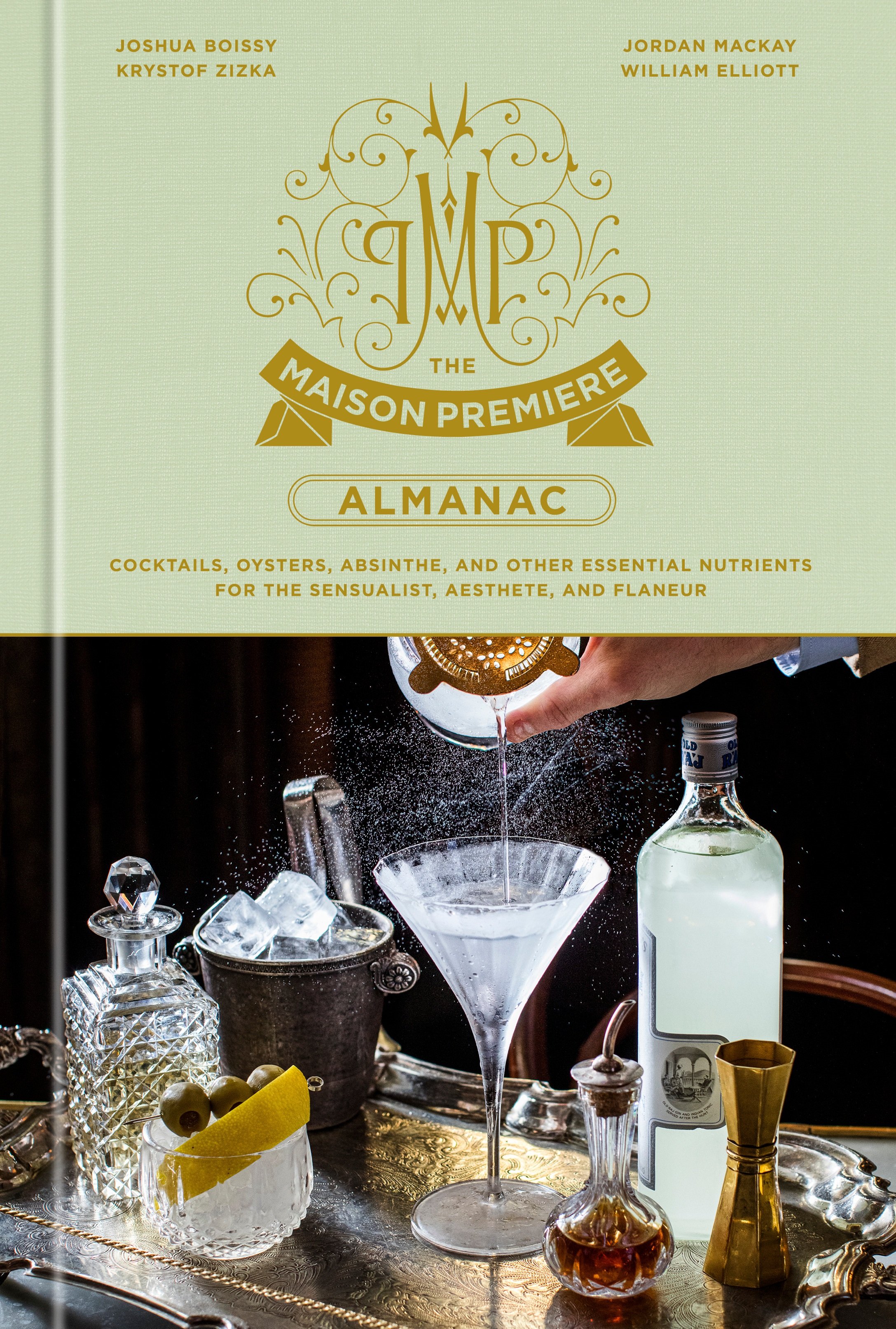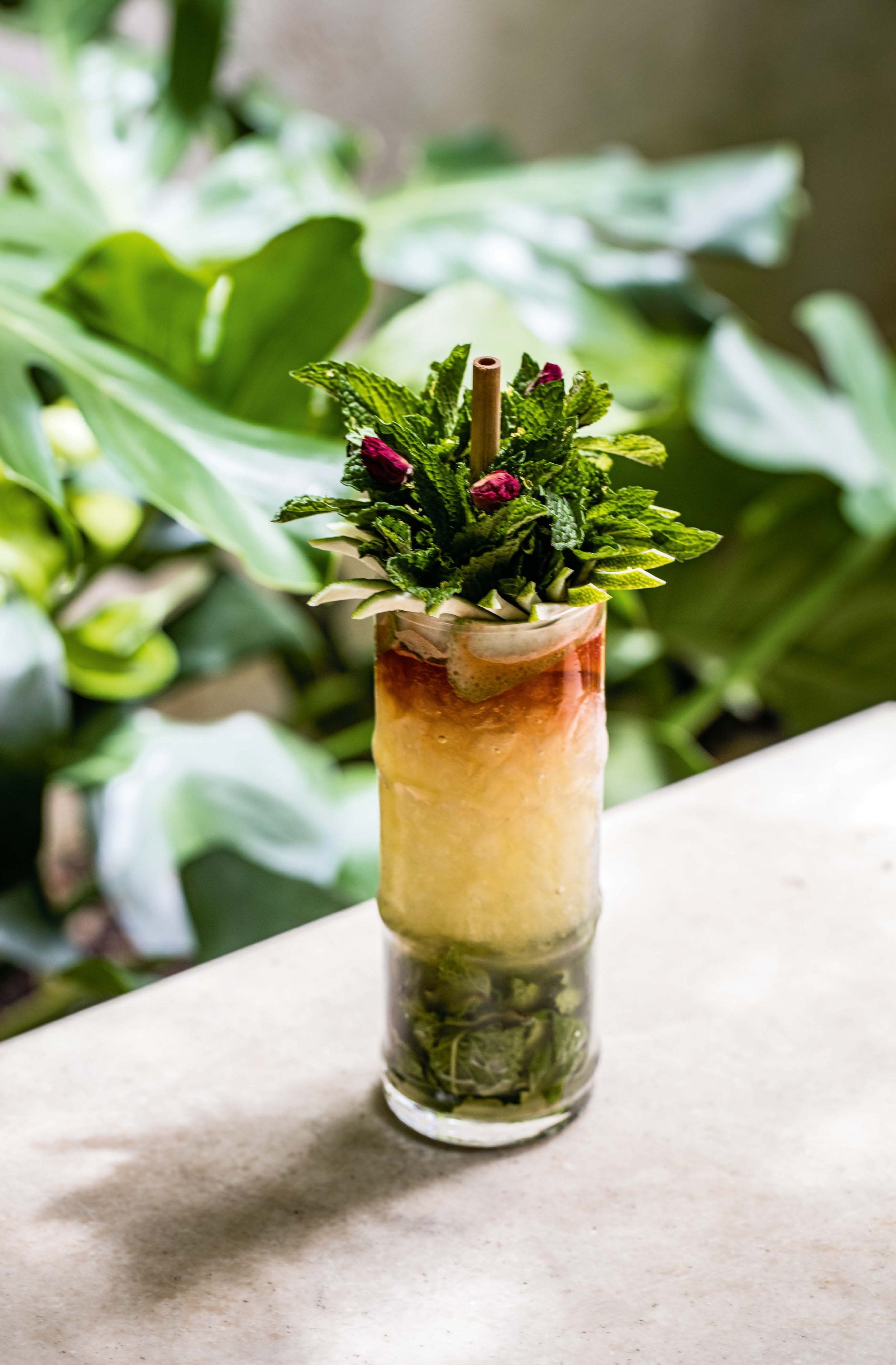Boozy Book Review: The Maison Premiere Almanac
Maison Premiere Almanac
By Joshua Boissy, Krystof Zizka, Jordan Mackay, and William Elliott (published April 25, 2023, Clarkson Potter)
When a cocktail book has a bar’s name in the title, it can mean a few different things. The PDT Cocktail Book is mostly a recipe book, with specific recipes and brand choices as served at the bar. The book from Cure celebrates New Orleans drinks and drink culture; not just the culture and cocktails of that particular bar. And the first Death & Co. book (as well as the rest) is an instruction manual for constructing the drinks within it — a how-to book.
The release from Brooklyn’s Maison Premiere feels to me more like a souvenir or keepsake that you buy after a visit to the bar to extend the experience of being there into your own home. Though it is primarily a recipe book like the others mentioned, it’s also a book about the bar.
Front Material
Maison Premiere bar
The introduction tells the prehistory of Maison Premiere, how the theme was chosen, and details the building of the physical space and hiring the people who work within it. The subtitle promises “Cocktails, Oysters, Absinthe, and Other Essential Nutrients for the Sensualist, Aesthete, and Flaneur,” and information for the named audience includes style tips for men, soundtrack suggestions, and recommended oyster varieties to purchase. There is an inventory of antiques on display in the bar and also of the plants on the back garden. With this information you could create your own mini-Maison within your maison.
Before we get to the cocktail recipes, the first of which doesn’t appear until page 87, there is further introductory material. Some of it is straightforward, citing their choice of bar tools such as their preferred measuring jiggers and strainers. Other times there are longer justifications for the choices, such as the four full pages dedicated to the selection of cocktail shakers and three additional pages on house shaking techniques.
Maison Premiere cocktail
Specific Mixology
The cocktails are divided into sections according to theme, rather than into classics and modern, or from lower to higher ABV. The sections are New Orleans Drinks, Garden Cocktails (daytime drinks with lots of ice, including the Mint Julep), Drawing Room Drinks (rich and flavorful drinks like the Old Fashioned), Bracing and Urbane (Martini-style), and Tropicali (Mai Tais and the like).
As a collector (hoarder, perhaps) of cocktail books, I appreciate the tiny, fussy preparation details specific to each drink. Here we see the otherwise classic Negroni recipe getting three dashes of orange bitters. The nearly-finished Ramos Gin Fizz is placed in the freezer for a few minutes to “tighten up” its froth before a straw and soda water are added. Citrus peel garnishes are expressed and discarded in up drinks as a rule, so that the peel isn’t bobbing about in the liquid of the cocktail glass while one drinks it.
In The Maison Premiere Almanac they list the specific build of each cocktail, including the choice of liquor and mixer brands. Here we see that the drinks are often made with a split of bases and brands – the Old Fashioned, for example, includes a mix of two different rye whiskeys, two different bitters, and two citrus twists. The Mai Tai calls for four different rums.
Just the Right Stuff
Missionary's Downfall
The Pimm’s Cup includes the standard Pimm’s No. 1, gin, and ginger beer, plus two kinds of bitters, orange flower water, saline solution, ginger syrup, lemon juice, lemon cordial, cucumber slices, and four garnishes.
The drink sounds ridiculously delicious but also is a great example of being careful of what you ask for when you ask for a bar’s recipe: It might just be more complicated than you expect. There are probably more drinks in the book with six-plus ingredients listed than there are with four or less. Many of the drinks are made with boutique brands (in keeping with the bar’s philosophy) that may be challenging to source in some states or markets. But they’re not excessively hard drinks to make – there’s no agar-agar clarification nor isolated acid adjusting in this book. It’s a book and a bar of curation, not complication.
After the main cocktail section there are about thirty pages dedicated just to absinthe – and cocktails with absinthe. This section includes history, drinking rituals like the traditional absinthe fountain, and just three of their favorite brands (surprisingly, all made in the United States). The next section gives oysters a similar closeup. It includes descriptions of oyster varieties, purchasing and seasonality advice, and instruction on oyster knives and shucking.
Overall, The Maison Premiere Almanac succeeds at reflecting its namesake bar. The production quality, design, and photography are excellent throughout. The somewhat esoteric content and choice of cocktails are very specific to the venue and seem to include only drinks actually served at the bar. It is focused. For after all, the book is not the Maison Premiere guide to the world; it is the world’s guide to Maison Premiere.




